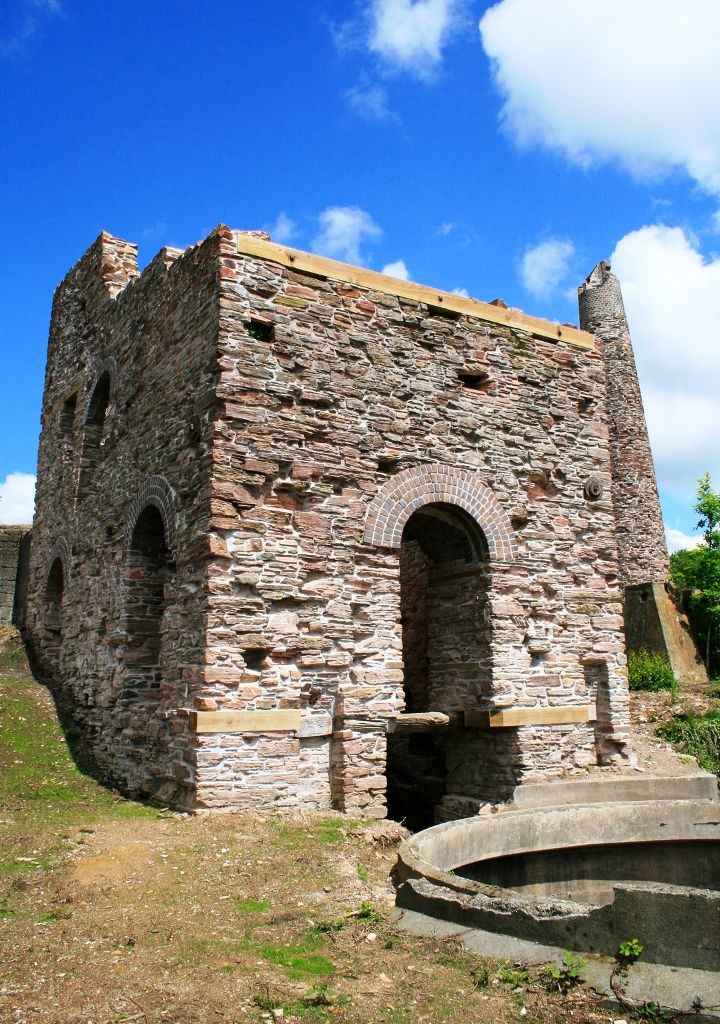
The western engine house at SX 40003 70550
Copyright © Alex Fraser
The Prince of Wales Mine is an amalgamation of several other mines amongst which are Wheal Fortune, Wheal Pleasant, Wheal George, Wheal Barnard and West Edward which together were known as Calstock United Tin and Copper Mines in the early part of the 19th century. In 1861 the mine was re-constituted as the Prince of Wales Mine and operated intermittently from then until 1914.
In 1940, during World War II, a processing floor was established at the mine to rework the earlier dumps and material from nearby small mines and Devon Great Consols.
Around 1971 a Canadian company carried out exploratory work including drilling and finally in 1977 an exploratory adit was driven into the hillside.
Between 1861 and 1914 output from the mine was 10,845 tons of copper ore, over 1000 tons of black tin and 7,720 tons of arsenic yielding iron pyrites.

The middle engine house at SX 40078 70609
Copyright © Alex Fraser
The western engine house at SX 40003 70550, was built in 1888 and powered stamping machinery. It was modified during the 1940’s reprocessing event and at this time the stamping floor, loading and boiler house were demolished.
The middle engine house at SX 40078 70609, built in 1879, once held a 50-inch pumping engine extracting water from the adjacent Watson’s Shaft and its boiler house is attached to its eastern wall. Its detached chimney, stands a short distance to the north-west and they are connected to each other by an underground flue.
The third engine house, installed in 1888, held an all-indoor beamed rotative engine for winding from Watson’s Shaft. The bedstone remains in its original position and to the south is the crankshaft loading and a rectangular pit which would have held the winch drum. Traces of the boiler house survive to the north.
Return to previous page
